- News >
- Top 10 Most Visited Museums In The World
Top 10 Most Visited Museums In The World
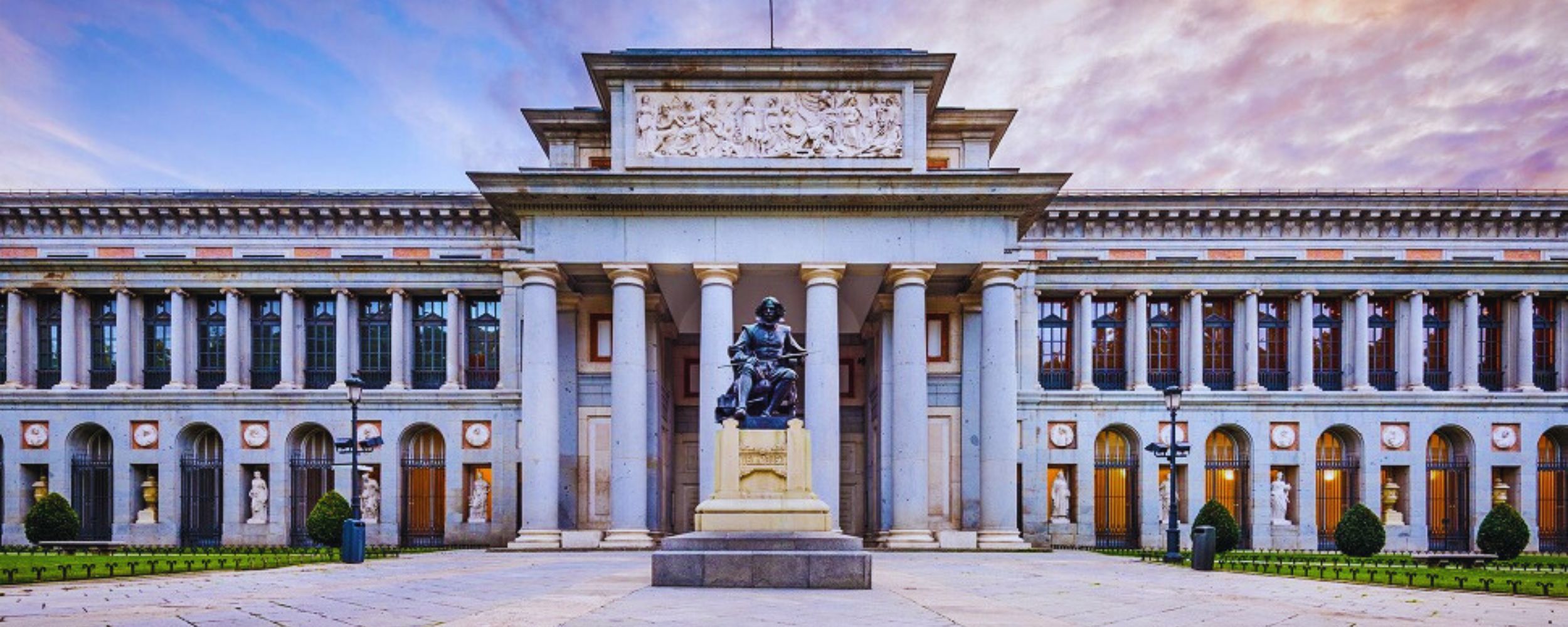
These museums attract millions of visitors annually, showcasing a rich array of art, history, and cultural artefacts.
|
Museum |
Location |
Visitors in 2022 |
Visitors per museum |
|
Paris, France |
9,636,400 |
963,640 |
|
|
State Hermitage – St. Petersburg, Russia |
St. Petersburg, Russia |
4,500,278 |
450,028 |
|
American Museum of Natural History |
New York, NY, USA |
5,478,956 |
547,896 |
|
Natural History Museum – London, UK |
London, UK |
5,743,248 |
574,325 |
|
The National Gallery |
London, UK |
6,031,574 |
603,157 |
|
Tate Modern |
London, UK |
6,031,574 |
603,157 |
|
British Museum |
London, UK |
6,701,036 |
670,104 |
|
The Metropolitan Museum of Art |
New York, NY, USA |
7,726,321 |
772,632 |
|
National Museum of China |
Beijing, China |
9,093,070 |
909,307 |
|
Vatican Museums |
Vatican City |
8,429,516 |
842,952 |
1. The Louvre — Paris, France
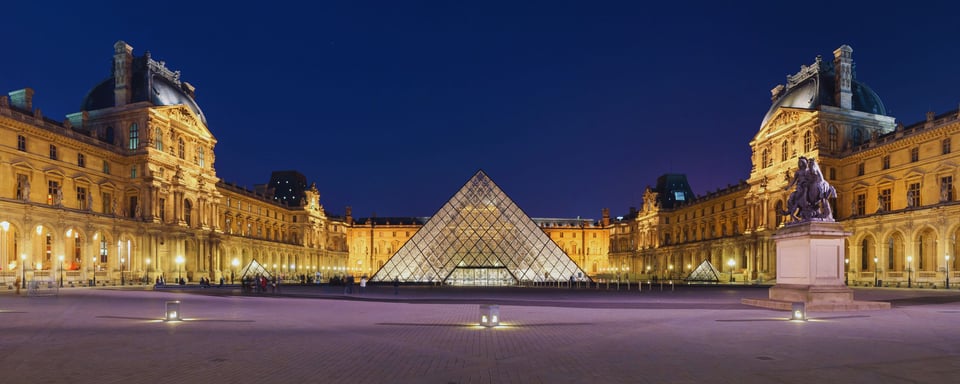
With approximately 9.3 million annual visitors, the Louvre remains the top-ranking museum. Among these guests, 30% are residents of the country who typically explore temporary exhibitions, while the remaining 70% are international tourists who come to admire the permanent exhibits and iconic Parisian landmarks.
Within its vast 650,000 square feet of gallery space, the Louvre proudly displays an extensive collection of masterpieces, including renowned artworks such as Leonardo Da Vinci's 'Mona Lisa,' the sculpture of Aphrodite known as the 'Venus de Milo,' and the world's finest diamond, the 'Regent.' Housing a staggering 70,000 pieces of art, the Louvre stands as one of the largest museums globally.
The Louvre in Paris, France is not only one of the most visited museums in the world but also renowned for its extensive collections, exceptional exhibitions, and immense historical and cultural significance. Here's an overview of its key aspects:
Collections
- The Louvre houses a vast and diverse collection of over 38,000 artworks, spanning various periods and civilizations from antiquity to the 21st century.
- The museum's collections encompass different art forms, including paintings, sculptures, decorative arts, prints, drawings, and archaeological artefacts.
- It boasts iconic masterpieces like Leonardo da Vinci's "Mona Lisa," Alexandros of Antioch's "Venus de Milo," and the Winged Victory of Samothrace, among many others.
- The Louvre's collections feature works from different regions, including European, Egyptian, Near Eastern, Greek, Roman, Islamic, and Asian art.
Exhibitions
- The museum regularly hosts temporary exhibitions that explore diverse themes, artists, and artistic movements.
- These exhibitions often feature significant loans from other museums and private collections, offering visitors a chance to experience unique and thought-provoking displays.
Historical and Cultural Significance
- The Louvre's origins date back to the late 12th century when it was a fortress, later transformed into a royal palace under King Philip II.
- It officially became a public museum in 1793, during the French Revolution, with the aim of making the royal art collections accessible to the public.
- The Louvre has witnessed significant historical events, including its conversion into the Musée Napoléon during Napoleon Bonaparte's reign.
- Its architectural grandeur, highlighted by the iconic glass pyramid designed by I.M. Pei, has become a symbol of Paris and a landmark recognized worldwide.
- The Louvre's extensive collections and cultural significance make it a vital institution in the preservation, study, and appreciation of art and history.
Overall, the Louvre's remarkable collections, dynamic exhibitions, and rich historical and cultural heritage make it a must-visit destination for art lovers, history enthusiasts, and visitors seeking to explore the world's cultural treasures.
2. National Museum of China — Beijing, China
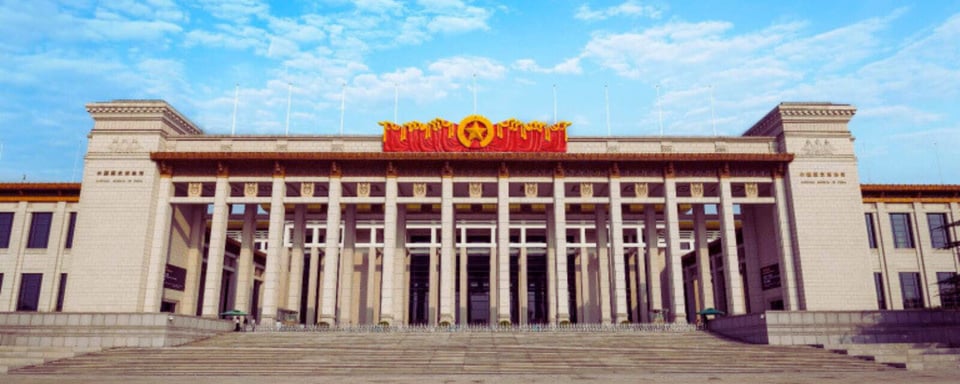
Ranked as the second most visited museum in 2014 with 7.6 million visitors, the National Museum of China in Beijing holds its position. The museum, which opened in 2003, was formed by the merger of two museums, namely the National Museum of Chinese History and the National Museum of Chinese Revolution. Situated conveniently in Tiananmen Square, this expansive museum spans an impressive 192,000 square metres and offers free admission to its visitors.
It presents a captivating exploration of both ancient and modern Chinese history through its exhibitions. Among the treasures housed within its walls are remarkable artefacts such as a beautifully painted red clay basin from the Neolithic period, jade carvings like the jade dragon dating back to 6000-5000 BC, and the flag that Mao Zedong raised during the Proclamation of the People's Republic of China in 1949.
The National Museum of China, located in Beijing, China, is a significant cultural institution with a rich history, diverse collections, and notable exhibitions. Here's an overview of its collections, exhibitions, and historical or cultural significance:
Collections
- The National Museum of China boasts an extensive collection that spans over 5,000 years of Chinese history and culture.
- Its collections encompass various art forms, including paintings, calligraphy, sculptures, ceramics, bronze artefacts, jade objects, ancient coins, and more.
- The museum showcases artworks and artefacts from different periods, dynasties, and regions of China, providing a comprehensive view of the country's artistic and cultural heritage.
- The collections cover diverse themes, including ancient civilizations, imperial treasures, religious art, folk traditions, and contemporary Chinese art.
Exhibitions
- The museum presents a wide range of exhibitions that showcase different aspects of Chinese history, art, and culture.
- These exhibitions often feature both permanent displays and temporary exhibitions, offering visitors a chance to explore various themes and artistic styles.
- The museum hosts curated exhibitions that delve into specific topics, artists, or historical periods, providing in-depth insights and educational experiences for visitors.
Historical and Cultural Significance
- The National Museum of China has a significant historical background, tracing its roots to the establishment of two separate museums: the National Museum of Chinese History and the National Museum of Chinese Revolution.
- The merger of these two museums in 2003 led to the creation of the National Museum of China as it exists today.
- The museum's location in Beijing, the capital city of China, enhances its cultural and historical importance, as it stands as a symbol of the nation's rich heritage and artistic achievements.
- It serves as a platform for preserving, studying, and showcasing Chinese history, art, and culture, contributing to the promotion and understanding of China's cultural legacy both domestically and internationally.
The National Museum of China in Beijing is a renowned cultural institution that houses diverse collections representing Chinese history and culture. With its engaging exhibitions and historical significance, the museum offers visitors a comprehensive and immersive experience, making it a significant destination for those interested in exploring the rich heritage of China.
3. Vatican Museums — Vatican
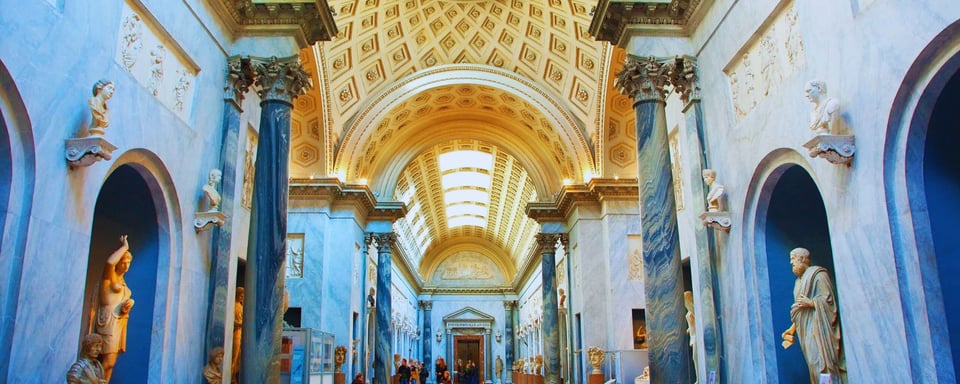
In 2014, the Vatican Museums experienced a significant increase in attendance, potentially attributed to the first full year under the newly elected Pope Francis. During this year, the Vatican Museums, a collection of museums and galleries established in the 1700s, welcomed 6.2 million visitors.
Within this extensive complex, visitors can explore a diverse range of exhibitions, including ancient Egyptian artefacts, Roman sculptures, a remarkable collection of 15th-17th century tapestries, a gallery dedicated to maps, as well as modern and contemporary religious art. Among the 54 galleries, the final one is the renowned Sistine Chapel, renowned for its breathtaking ceiling painted by Michelangelo.
The Vatican Museums, situated within the Vatican City in Rome, Italy, are an exceptional cultural institution renowned for their extensive collections, captivating exhibitions, and profound historical and cultural significance. Here's an elaborate overview of the Vatican Museums:
Collections
- The Vatican Museums house an immense collection of art and historical artefacts, covering various periods and civilizations.
- The collections include ancient Egyptian and Mesopotamian antiquities, Greek and Roman sculptures, mediaeval and Renaissance art, and religious artworks from different periods.
- The museums are particularly renowned for their vast assortment of Christian art, featuring masterpieces by renowned artists such as Michelangelo, Raphael, Caravaggio, and many others.
- Notable collections within the Vatican Museums include the Pinacoteca (Picture Gallery), the Vatican Library, the Gallery of Maps, the Sistine Chapel, and the Raphael Rooms.
Exhibitions
- The Vatican Museums offer a range of exhibitions that highlight different aspects of art, history, and spirituality.
- Temporary exhibitions are periodically organised, focusing on specific themes, artists, or periods, offering visitors a chance to explore unique displays beyond the permanent collections.
- The museums' exhibition spaces provide a rich context and narrative for the artworks, enhancing visitors' understanding and appreciation of the historical and cultural significance of the pieces on display.
Historical and Cultural Significance
- The Vatican Museums hold immense historical and cultural significance as they are part of the Vatican City, the spiritual and administrative headquarters of the Roman Catholic Church.
- The museums' origins date back to the early 16th century when Pope Julius II founded the collection with the acquisition of classical sculptures.
- Over the centuries, subsequent popes expanded the collections and established the museums to preserve and showcase the immense wealth of art and cultural treasures accumulated by the Catholic Church.
- The Sistine Chapel, one of the highlights of the Vatican Museums, holds extraordinary significance as it houses Michelangelo's renowned ceiling frescoes, including the iconic "Creation of Adam."
- The Vatican Museums serve not only as repositories of art and history but also as platforms for cultural exchange, education, and the promotion of interfaith dialogue.
The Vatican Museums stand as a remarkable institution that encompasses an unparalleled collection of art and historical artefacts. With their diverse collections, immersive exhibitions, and profound historical and cultural significance, the Vatican Museums offer visitors a unique opportunity to explore the rich artistic and spiritual heritage of the Vatican City and the Roman Catholic Church.
4. The Metropolitan Museum of Art — New York, NY, USA
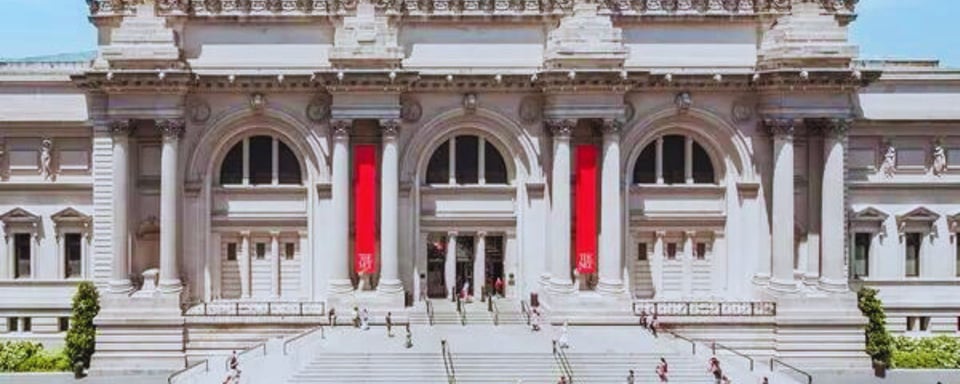
The Metropolitan Museum of Art, affectionately known as The Met, stands as the largest and most renowned art gallery in the United States. Located in New York City, The Met attracted 6.3 million visitors in 2014. Its permanent collection is a treasure trove of over 2 million artworks, encompassing a remarkable timeline of 5,000 years, from ancient Egyptian artefacts to Europe's classical masterpieces, as well as American and modern artworks. The main building, established in 1870, is situated along Manhattan's Museum Mile, gracing the scenic Central Park.
The Metropolitan Museum of Art, located in New York City, is an iconic cultural institution known for its extensive collections, captivating exhibitions, and profound historical and cultural significance. Here's an overview of the collections, exhibitions, and historical or cultural significance of The Metropolitan Museum of Art:
Collections
- The Metropolitan Museum of Art houses a vast collection spanning over 5,000 years of art history from cultures around the world.
- Its collections include artworks and artefacts from various periods, regions, and artistic styles, covering ancient civilizations, European classics, American art, Asian art, Islamic art, African art, and much more.
- The museum boasts an impressive collection of paintings, sculptures, prints, photographs, decorative arts, textiles, arms and armour, and archaeological artefacts.
- Some notable works in the collection include pieces by renowned artists such as Vincent van Gogh, Rembrandt, Monet, Vermeer, Picasso, and countless others.
Exhibitions
- The Metropolitan Museum of Art hosts a wide range of temporary and special exhibitions throughout the year.
- These exhibitions explore diverse themes, artistic movements, specific artists, historical periods, and cultural phenomena.
- The museum collaborates with other institutions worldwide to bring remarkable loaned artworks and artefacts, creating unique and thought-provoking displays.
Historical and Cultural Significance
- The Metropolitan Museum of Art, founded in 1870, holds immense historical significance as one of the world's largest and most influential art museums.
- It is situated in a landmark building on the edge of Central Park, attracting millions of visitors annually and serving as a cultural hub in New York City.
- The museum's collections and exhibitions represent the depth and breadth of human creativity, fostering understanding and appreciation of art, history, and culture.
- The Met's educational programs, research initiatives, and conservation efforts contribute to the preservation and study of art worldwide.
- It has played a pivotal role in shaping the art world, influencing scholarship, curatorial practices, and public engagement with the arts.
The Metropolitan Museum of Art is a renowned institution that holds immense historical and cultural significance. Its diverse collections, dynamic exhibitions, and commitment to education and research make it a vital hub for art lovers, scholars, and visitors seeking to explore and appreciate the rich artistic and cultural heritage of humanity.
5. British Museum — London, UK
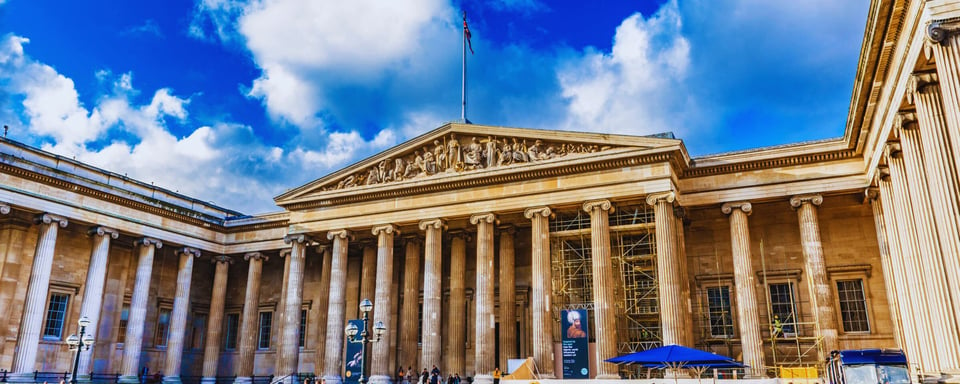
Established in 1753, the British Museum holds the prestigious distinction of being the world's first national public museum. Even today, it remains the most frequented museum in Britain, attracting 6.7 million visitors in 2014. A unique aspect of the British Museum is its enduring commitment to free entry.
Among its prized possessions, the museum proudly displays highly significant and coveted artefacts such as the Rosetta Stone, Parthenon sculptures, and ancient Egyptian structures. The museum itself is an architectural marvel, with the Queen Elizabeth II Great Court standing as a prominent feature—an enclosed inner courtyard that was completed in 2000 and has become an iconic sight.
The British Museum, located in London, United Kingdom, is a world-renowned cultural institution with remarkable collections, captivating exhibitions, and profound historical and cultural significance. Here's an overview of the collections, exhibitions, and historical or cultural significance of the British Museum:
Collections
- The British Museum houses an extensive collection of over eight million objects representing the history and cultures of civilizations from around the world.
- Its collections span a wide range of periods and regions, including ancient Egypt, Mesopotamia, Greece, Rome, Europe, the Middle East, Asia, Africa, and the Americas.
- The museum's holdings include significant artefacts such as the Rosetta Stone, the Elgin Marbles from the Parthenon, the Egyptian mummies, the Lewis Chessmen, the Sutton Hoo treasures, and countless other masterpieces.
Exhibitions
- The British Museum presents a range of exhibitions that explore various aspects of human history, art, and culture.
- These exhibitions often feature both permanent displays and temporary exhibitions, providing visitors with the opportunity to delve deeper into specific themes, civilizations, or artistic movements.
- The museum collaborates with institutions worldwide to create thought-provoking displays, showcasing loaned objects and fostering international cultural exchange.
Historical and Cultural Significance
- The British Museum has a rich historical legacy, dating back to its establishment in 1753. It was the first national public museum in the world, founded on the principle of making the collections accessible to all.
- The museum's comprehensive collections, acquired through exploration, excavation, and acquisitions over centuries, embody the global reach of British cultural and colonial history.
- Its architecture, including the iconic Great Court designed by Norman Foster, serves as a landmark and symbol of cultural heritage in London.
- The museum's emphasis on research, scholarship, and education makes it a centre for intellectual and academic study, contributing to the understanding and interpretation of human history and culture.
The British Museum stands as a globally significant institution, housing vast collections that represent the diverse heritage of human civilization. Through its exhibitions, the museum offers visitors an immersive experience, showcasing the depth and breadth of human creativity, innovation, and cultural achievements. The British Museum's historical legacy and commitment to research and education make it a vital institution for the study and appreciation of human history and cultural heritage.
6. Tate Modern — London UK
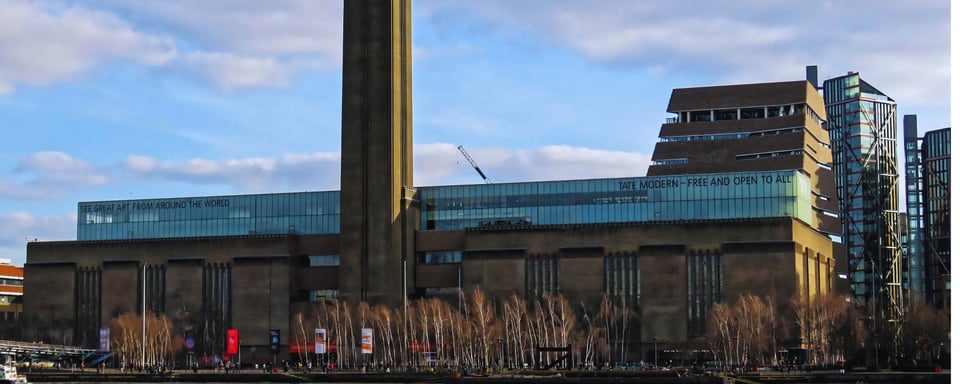
With an impressive collection of contemporary and modern art from around the world, the Tate Modern attracts a significant number of visitors. In 2014, the museum welcomed 5.8 million people through its doors. Situated on the south bank of the River Thames, the Tate Modern is a part of the esteemed Tate group of museums, which includes Tate Britain, Tate Liverpool, Tate St Ives, and Tate Online.
This free museum occupies the former Bankside Power Station and features a distinctive chimney that stands tall amidst the surrounding skyscrapers. Spanning across seven floors, the gallery houses an array of renowned artworks, including masterpieces by artists such as Pablo Picasso, Roy Lichtenstein, and many others, forming part of its permanent collection.
Tate Modern, located in London, United Kingdom, is a prominent cultural institution celebrated for its diverse collections, innovative exhibitions, and significant historical and cultural significance. Here's an overview of the collections, exhibitions, and historical or cultural significance of Tate Modern:
Collections
- Tate Modern houses an extensive collection of modern and contemporary art from around the world.
- The museum's collections encompass various art forms, including paintings, sculptures, installations, photography, video art, and performance art.
- It showcases works by renowned artists such as Pablo Picasso, Andy Warhol, Salvador Dalí, Frida Kahlo, Louise Bourgeois, and many others.
- The collections reflect the evolution of artistic movements, including Cubism, Surrealism, Abstract Expressionism, Pop Art, Minimalism, and Conceptual Art.
Exhibitions
- Tate Modern hosts a dynamic program of exhibitions that explore different themes, artistic practices, and cultural perspectives.
- These exhibitions often feature temporary displays that present the works of contemporary artists, retrospectives of established artists, or thematic exhibitions that address social, political, or environmental issues.
- The museum embraces interdisciplinary approaches and engages with various media, encouraging dialogue and experimentation.
Historical and Cultural Significance
- Tate Modern holds significant historical and cultural importance as one of the world's leading contemporary art museums.
- The museum occupies the iconic Bankside Power Station, transformed into an architectural masterpiece by Herzog & de Meuron, attracting millions of visitors each year.
- It symbolises London's position as a global hub for contemporary art and contributes to the city's vibrant cultural landscape.
- Tate Modern's innovative approach to exhibitions and programming has redefined the museum experience, fostering public engagement and dialogue around contemporary art and its role in society.
- The museum's educational initiatives, outreach programs, and digital platforms extend its reach and impact, making art accessible to a wide and diverse audience.
Tate Modern is a renowned institution that showcases modern and contemporary art, offering visitors a profound exploration of artistic expression and cultural discourse. Its diverse collections, groundbreaking exhibitions, and forward-thinking approach have positioned it as a leading institution in the global art world. Tate Modern's historical and cultural significance lies in its contribution to shaping the contemporary art landscape, fostering creativity, and facilitating meaningful connections between artists, artworks, and audiences.
7. The National Gallery — London, UK
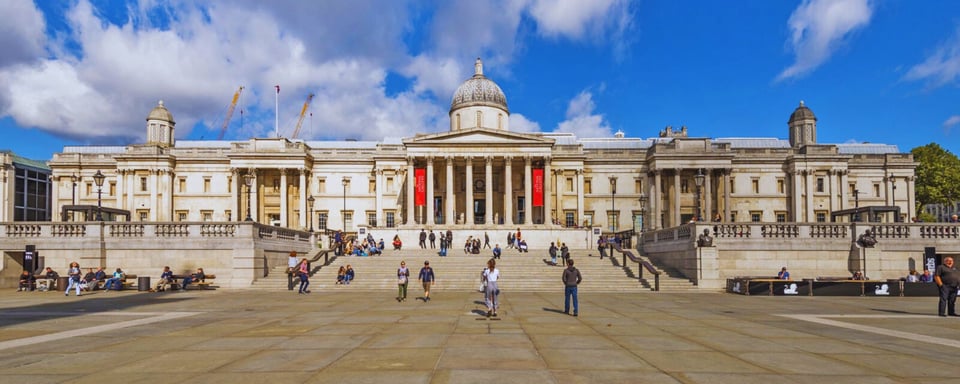
The National Gallery holds the distinction of being the largest art gallery in the United Kingdom. In 2014, a staggering 6.4 million visitors flocked to witness its impressive collection of Western European art spanning from the 13th to the 19th centuries. Situated at the heart of London on Trafalgar Square, the gallery has been welcoming the public since its opening in 1838. Admission to this remarkable institution is free.
Visitors can admire significant works of Western art, including masterpieces like Velázquez's 'The Rokeby Venus,' which is the sole surviving female nude by the artist, JMW Turner's 'The Fighting Temeraire,' and Vincent van Gogh's vibrant 'Sunflowers.' With a collection boasting more than 2,300 paintings, the National Gallery offers a captivating journey through the realms of artistic excellence.
The National Gallery, located in London, United Kingdom, is a world-class art museum with notable collections, captivating exhibitions, and profound historical and cultural significance. Here's an overview of the collections, exhibitions, and historical or cultural significance of The National Gallery:
Collections
- The National Gallery houses a vast collection of Western European paintings from the 13th to the 19th centuries.
- Its collections include masterpieces by renowned artists such as Leonardo da Vinci, Vincent van Gogh, Rembrandt, Michelangelo, Monet, Titian, and many others.
- The museum's collection spans various artistic movements, including Renaissance, Baroque, Rococo, Romanticism, and Impressionism.
- It offers visitors the opportunity to explore artworks from different schools and regions, showcasing the richness and diversity of European art.
Exhibitions
- The National Gallery presents a range of exhibitions that explore specific themes, artists, or periods, providing deeper insights into the collection.
- These exhibitions often feature both permanent displays and temporary exhibitions, allowing visitors to experience a diverse array of artistic styles and narratives.
- The museum collaborates with other institutions to curate special exhibitions, showcasing loaned artworks and fostering dialogue between different collections and cultural contexts.
Historical and Cultural Significance
- The National Gallery has a rich historical legacy, dating back to its establishment in 1824.
- It was founded with the aim of making the national collection of paintings accessible to the public, playing a pioneering role in democratising art and cultural appreciation.
- The museum's location in Trafalgar Square, a central and iconic site in London, adds to its cultural significance and accessibility.
- The National Gallery serves as a hub for art education, research, and scholarship, contributing to the understanding and appreciation of Western European art history.
- It plays a vital role in preserving and exhibiting artistic masterpieces, fostering public engagement, and inspiring future generations of artists, scholars, and art enthusiasts.
The National Gallery stands as a significant institution, showcasing Western European art from the 13th to the 19th centuries. Its exceptional collections, thought-provoking exhibitions, and historical legacy make it a prominent cultural destination in London and a renowned institution in the global art world. The National Gallery's cultural and educational contributions have shaped the appreciation and understanding of art history, while also providing visitors with enriching experiences and insights into the artistic achievements of European masters.
8. Natural History Museum – London, UK
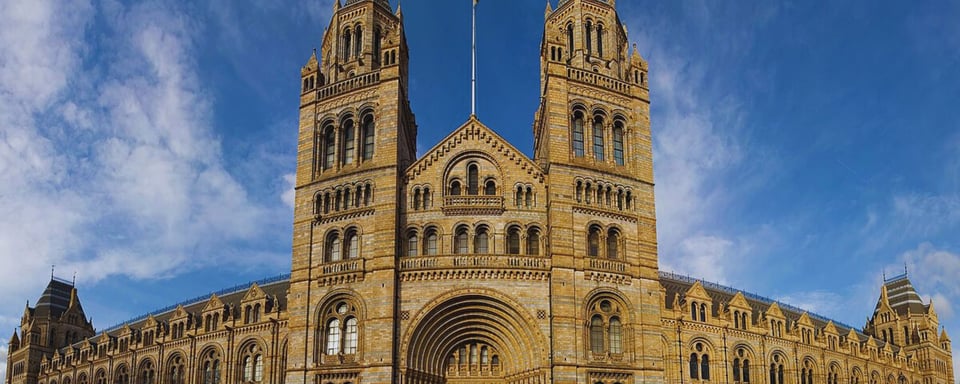
In 2014, the Natural History Museum in London witnessed an impressive number of visitors, with 5.4 million people flocking to its premises. The museum is home to a remarkable collection of over 80 million specimens, some of which date back billions of years. Since its establishment in 1881, the museum has been housed in an iconic Romanesque building and has always offered free entry to visitors.
Throughout its halls, visitors can marvel at the display of numerous large skeletons, ranging from whales and elephants to the renowned Diplodocus cast that has graced the main entry hall for a century. Originally part of the British Museum, the Natural History Museum became an independent entity in 1963. A notable addition to the museum is the Darwin Centre, which opened in 2009. This unique space serves as both a repository for historic collections and a functioning laboratory for scientists.
The Natural History Museum, located in London, United Kingdom, is a prominent institution known for its diverse collections, engaging exhibitions, and significant historical and cultural significance. Here's an overview of the collections, exhibitions, and historical or cultural significance of the Natural History Museum:
Collections
- The Natural History Museum houses a vast collection of specimens representing the natural world, including botany, entomology, mineralogy, palaeontology, and zoology.
- Its collections comprise over 80 million specimens, some of which are billions of years old, spanning various scientific disciplines and geographic regions.
- The museum's holdings include fossils, minerals, plants, insects, mammals, birds, reptiles, amphibians, and marine life, among other natural history artefacts.
Exhibitions
- The Natural History Museum offers a range of exhibitions that engage visitors with the wonders of the natural world.
- These exhibitions explore various themes, including biodiversity, ecosystems, evolution, climate change, and human impact on the environment.
- The museum employs interactive displays, multimedia presentations, and immersive experiences to educate and inspire visitors of all ages.
Historical and Cultural Significance
- The Natural History Museum has a significant historical background, dating back to its founding in 1881.
- It was built in a distinctive Romanesque architectural style and has become an iconic landmark in London's cultural landscape.
- The museum's collections and exhibitions have contributed to scientific research and understanding of the natural world, shaping the field of natural history and inspiring generations of scientists and researchers.
- It serves as an educational resource, offering educational programs, workshops, and events to foster public engagement and appreciation for the natural world.
- The museum's iconic displays, such as the life-sized dinosaur skeletons and the iconic blue whale model suspended from the ceiling, have become cultural symbols and draw millions of visitors each year.
The museum's historical and cultural significance lies in its role as a centre for scientific research, education, and public engagement, inspiring a greater understanding and appreciation of the natural world and our place within it.
9. American Museum of Natural History — New York, NY, USA
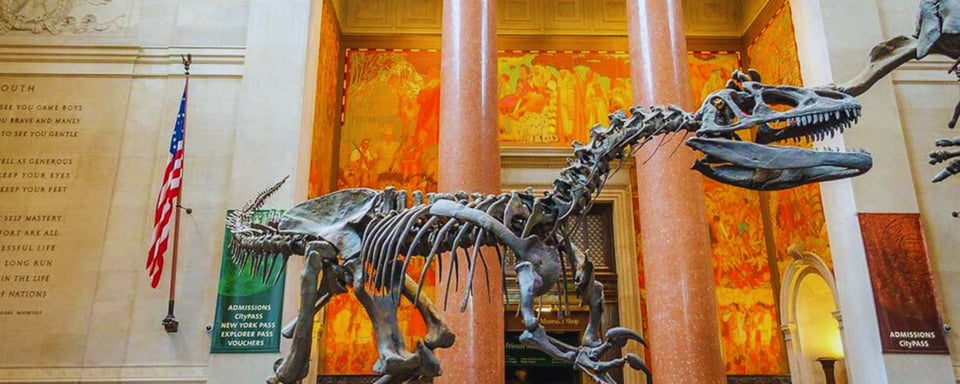
Situated across from Central Park on Manhattan's Upper West Side, the American Museum of Natural History attracted 5.0 million visitors in 2014. Comprising 27 interconnected buildings, this expansive museum stands as one of the largest in the world. Within its vast premises, visitors can explore 45 permanent exhibition halls, including captivating displays such as the biodiversity and environmental halls, the Hall of Ocean Life, and more.
The museum is also home to the renowned Hayden Planetarium, housed in the Rose Center for Earth and Space. Notably, the museum showcases a multitude of fascinating fossils, including a T-rex composed primarily of genuine fossil bones, a larger relative of the woolly mammoth, a brontosaurus, and other intriguing specimens.
The American Museum of Natural History, located in New York City, is a renowned institution with rich collections, captivating exhibitions, and significant historical and cultural significance. Here's an overview of the collections, exhibitions, and historical or cultural significance of the American Museum of Natural History:
Collections
- The American Museum of Natural History houses a vast collection of over 34 million specimens, representing various disciplines of natural history, anthropology, palaeontology, and astronomy.
- Its collections include fossils, minerals, rocks, meteorites, animal specimens, botanical specimens, cultural artefacts, human remains, and astrophysical data.
- The museum's holdings cover diverse topics such as the natural world, human evolution, cultural diversity, the universe, and the history of Earth.
Exhibitions
- The American Museum of Natural History presents a wide range of exhibitions that explore scientific, historical, and cultural themes.
- These exhibitions offer immersive experiences, interactive displays, and multimedia presentations to engage and educate visitors of all ages.
- The museum showcases topics such as dinosaurs, mammals, biodiversity, human origins, world cultures, space exploration, and the natural wonders of Earth.
Historical and Cultural Significance
- The American Museum of Natural History has a rich historical legacy, dating back to its founding in 1869.
- It has played a crucial role in scientific research, education, and public engagement with the natural world.
- The museum has been at the forefront of paleontological discoveries, contributing to our understanding of dinosaurs and prehistoric life.
- Its exhibits have been instrumental in popularising science and inspiring generations of visitors to appreciate and explore the natural world.
- The museum's iconic displays, including the Tyrannosaurus rex skeleton, the Blue Whale model, and the Hall of Human Origins, have become cultural landmarks in New York City.
The museum's contributions to our understanding of the natural world, human history, and the universe have shaped our collective knowledge and inspired curiosity about the wonders of the natural world.
10. State Hermitage – St. Petersburg, Russia
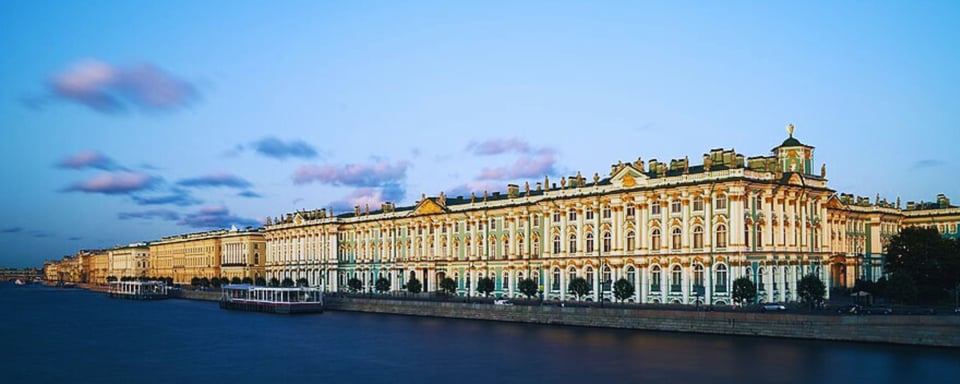
Situated in St. Petersburg, Russia, the State Hermitage is a world-renowned cultural institution of immense significance, standing as one of the most extraordinary art museums globally. Founded in 1764 by Empress Catherine the Great, the museum complex includes the illustrious Winter Palace along with several other buildings.
Boasting a vast collection of over three million items, the State Hermitage offers an unparalleled journey through the realms of art, history, and culture. Within its walls, visitors can immerse themselves in the brilliance of masterpieces created by legendary artists such as Leonardo da Vinci, Rembrandt, Picasso, and Van Gogh. The museum's architectural grandeur, combined with its extraordinary collection, provides an unforgettable experience for art enthusiasts and historians alike.
Collections
- The State Hermitage Museum houses a vast collection of art and cultural artefacts spanning thousands of years and representing various civilizations.
- Its collections include paintings, sculptures, decorative arts, archaeological finds, numismatics, jewellery, manuscripts, and more.
- The museum's holdings comprise works by renowned artists such as Leonardo da Vinci, Rembrandt, Michelangelo, Van Gogh, Picasso, and many others.
- It features collections from different regions and cultures, including European, Russian, Eastern, and Oriental art.
Exhibitions
- The State Hermitage Museum offers a diverse range of exhibitions that showcase different aspects of art, history, and culture.
- These exhibitions explore specific themes, artistic movements, historical periods, or civilizations, providing deeper insights into the collection.
- The museum regularly presents temporary exhibitions featuring loaned artworks from other institutions, enhancing the diversity and depth of the displays.
Historical and Cultural Significance
- The State Hermitage Museum has a rich historical background, dating back to its founding in 1764 by Empress Catherine the Great.
- It is housed in the architectural ensemble of the Winter Palace and several other buildings, creating a magnificent setting for its collections.
- The museum's historical significance lies in its role as one of the oldest and largest art museums in the world, showcasing the wealth and cultural heritage of the Russian Empire.
- The State Hermitage Museum serves as a repository of world art, contributing to the preservation, study, and appreciation of art and culture on an international scale.
- It is a symbol of St. Petersburg's cultural legacy and attracts millions of visitors annually, offering a unique window into the artistic achievements of civilizations throughout history.
The museum's historical and cultural significance, coupled with its architectural splendour, makes it a must-visit destination for art lovers, history enthusiasts, and visitors seeking to explore the rich cultural heritage of Russia and the world.
